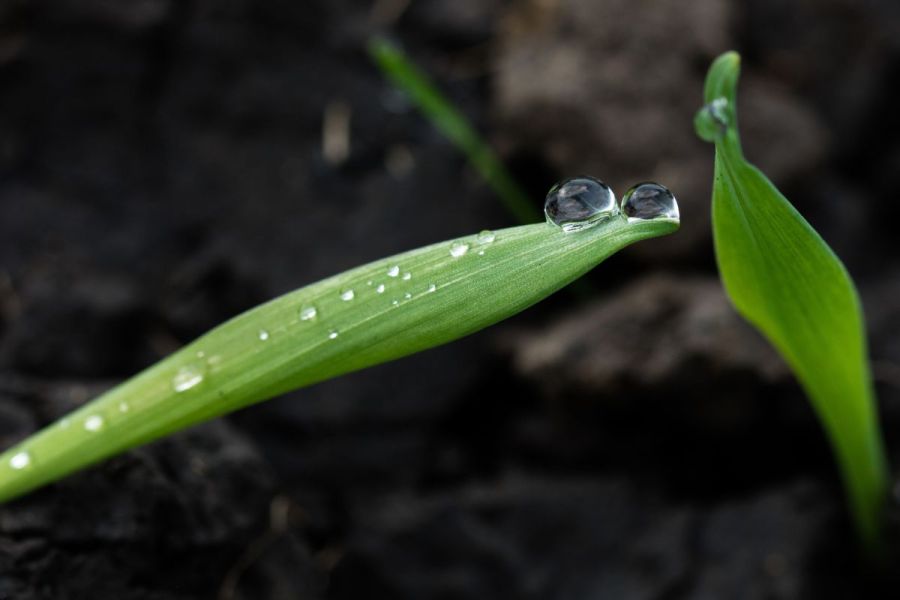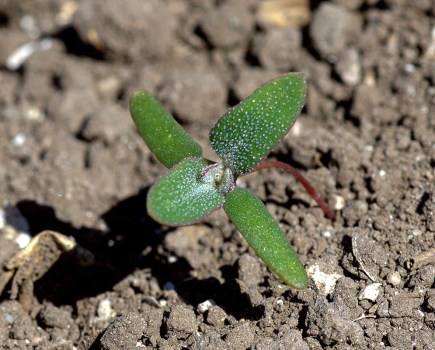Following what’s been a miserable autumn season, the pressure is undoubtedly on to ensure spring crops successfully overcome potential weather extremes that come their way. CPM looks at some of the options on the table.
“There’s no point planting valuable seed into ground where it has no chance to establish, as that’s the profit gone.”
By Janine Adamson and Rob Jones
Conditions the past few months were far from ideal but rather than linger on the past, it’s time to look forward to the spring, which by its nature, brings optimism. And although the weather can be just as unpredictable as the days grow longer, hope for a decent crop come harvest remains.
For those able to secure seed for spring cropping, there’ll arguably be a little nervousness around the investment, especially if it’s as a result of writing off what was sown in the autumn. But with less time to tiller and the ever present threat of drought, spring barley in particular requires additional attention to help give it the best start possible.
For south Shropshire-based independent agronomist, Matt Jones, this means focusing on rooting. “Given the dry springs we can experience these days, rooting is my main objective,” he says. “Without it, there’s a high risk of stressing the crop which then leaves it more susceptible to disease.”
With both straight arable and mixed farmers on his books, Matt aims to find cost-effective ways to support early crop establishment and emergence, which if possible, tick multiple boxes for the grower. For the past five years this has meant using Fielder’s Kick-Off – a phosphite and biostimulant seed treatment.
“When you dig and assess the root structure of a spring barley plant treated with Kick-Off, you can clearly see the difference compared with an untreated plant. It offers a lot in one product, which is an important consideration in a season where every spend has to be scrutinised,” he says.
Kick-Off contains phosphite, phosphate, manganese, potassium, zinc and sulphur, plus 19 plant-derived amino acids. As well as including it in his agronomic recommendations, Matt also uses the seed treatment at his home farm near Bishop’s Castle, where the majority of seed is home-saved.
“We disease test and on the whole don’t require a single purpose dressing (SPD), so invest in Kick-Off instead across both autumn and spring-drilled crops. I’m a big believer in phosphite-based products for rooting, the difference is clearly visible when they’re used,” he adds.
Another grower who’s remained faithful to Kick-Off is John Stonehouse from Scarborough. He’s used the product for the past four years to support the arable side of his 146ha mixed farming enterprise.
“It does exactly what it says on the tin,” he says. “The first time we used it was on a small area of spring barley which we had to drill late at the end of April. The land was high up and dried out, so we wanted to find a way to improve rooting.”
According to John, the results spoke for themselves – the spring barley treated with Kick-Off delivered 5t/ha compared with a basic manganese seed dressing that yielded 2.5t/ha. “Each year is different so the uplifts vary, but it isn’t always about yield. Healthier crops with better root structures can withstand stress better, which pays back in other ways,” he explains.
One wider benefit, explains John, is a reduction in cultivations across the farm’s ploughed land due to the improved rooting breaking up compaction and improving soil structure. “Removing a pass of the power harrow saves fuel costs as well as time,” he says.
As a mixed farmer with farm-saved seed, John confirms in terms of return on investment, the numbers add up. “It certainly performs across cereals and pulses but where I’d be intrigued to see it in action is on grass. We’re at the upper end of stocking density therefore are always looking for ways to maximise the performance of our grassland and permanent pasture.”
Fielder’s Robert Hawkin believes whether soils are in a good condition or suffering as in this season, Kick-Off has a role to play in boosting plant health and maximising yields. “The high phosphite-phosphate mix encourages deeper rooting and therefore supports crops to get up and away. This is in formulation with amino acids, which are widely recognised for their protein-building capacity which help plants to overcome different abiotic stresses,” says Robert.
“It also offers an excellent return on investment for growers, with our independent trials showing for every £1 spent on Kick-Off, the farmer sees on average £11 back in return.”
And for those with crops in the ground or who have already secured seed, partner product, Kick-On (P, Mn, Zn, S, N and K), can be applied as a foliar spray to young plants. “Kick-On enhances establishment and is ideal in troublesome conditions. It works by promoting healthy plant growth by aiding the plant’s natural defence systems and by stimulating meristem cell activity, especially in the plant roots,” explains Robert.
However, for Hutchinsons’ Dick Neale, scrutinising soil conditions with a pragmatic eye will help to assess whether conditions are good enough to support a profitable spring crop at all.
He says around 25-30% of winter crops weren’t drilled and many growers were relying on filling the gap with spring cropping. But, with 300 national flood warnings in place come mid-January, the situation remains high risk.
“Soils across the country are wet, wet, wet. On top of this we’re not in a drying time, so there won’t be much opportunity for them to dry up before early spring,” says Dick. “Even where crops have been drilled, it’s been so wet, they may not survive through to harvest meaning establishing a crop this spring is going to be very different to last year.”
In comparison, February 2023 was dry and relatively warm with most seed drilled early doors into good seedbed conditions, which supported yield potential.
“This isn’t going to be the case in 2024 – the forecast is cold and cold wet soils aren’t conducive to getting on early to drill, so limit the potential of a spring crop even before it starts,” explains Dick.
“Also, spring cereals don’t have the same drilling flexibility we have with winter wheat. When planted late they end up resembling a forage crop that doesn’t finish. So this emphasises the importance of looking at soil conditions before investing in any crop and asking the question if it really has the potential to be profitable.”
His advice is to work closely with an agronomist to make assessments and be realistic about which fields, or even parts of fields, will drill early and well.
“Turning headlands are often the wettest parts of a field so it may be worth leaving these and focussing on the drier parts of the field. There’s no point planting valuable seed into ground where it has no chance to establish as that’s the profit gone.”
He says equally, there are longer-term impacts on the following winter crop to consider. “Travelling on soils that aren’t ready will leave them damaged – the spring crop will be late to harvest, more than likely full of weeds, all of which will carry over into the performance of the following winter crop.”
Dick suggests waiting and considering a summer cover crop in these wet areas to help dry out and recondition the soil in preparation for winter planting.
But where spring crops are drilled, he agrees that early nutrition will be key as most nutrients will have moved down the soil profile and out of the feeding zone. “Keep an eye on pH; calcium is pretty mobile so that has to be monitored. A seedbed with a pH of 6.5 at the start of the autumn could have dropped to pH 6 by the spring; it’d be worth starting to check fields now,” says Dick.
“Realistically, we’re looking at late March before spring drilled crops will be getting up and away and they’ll hit a period of fast growth, so it’s important that the plant has access to nutrients as required.”
If weather conditions support ground travel within the next few weeks, and seed is already in the shed, the message from ProCam is that it’s still not too late for some varieties of winter wheat.
Based on AHDB’s Recommended List vernalisation data, the safest RL 2024/25 varieties for drilling until the end of February are RGT Skyfall, KWS Brium, RGT Bairstow and Swallow (Senova).
Head of crop production, Mike Thornton, says not only does wheat remain the most profitable option for many growers, but it may help to keep rotation planning on track. He also questions whether now is the right time to start experimenting.
“If you’re not used to growing a lot of spring cropping, is this really the year to try, given conditions are sub-optimal?” he questions. “Options such as linseed and spring oilseed rape might be considered for later drilling slots, but again, what are the impacts of those crops? Are they familiar, will they incur a late harvest and is there a local market?”
For those with spring cropping experience, Paul Gruber echoes Dick’s sentiment to assess land conditions on a field-by-field basis. “Experience tells us to not rush in with the drill if the ground is tender.
“Of course, this is contrary to research which says the earlier drilled spring crops perform better, but it’s worth bearing in mind that that’s only when they’re planted into favourable conditions. Don’t force it for the sake of a calendar date,” he concludes.
This article was taken from the latest issue of CPM. Read the article in full here.
For more articles like this, subscribe here.
Sign up for Crop Production Magazine’s FREE e-newsletter here.




